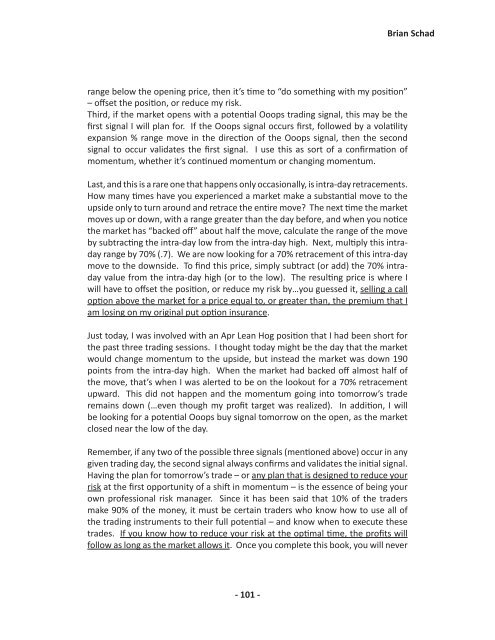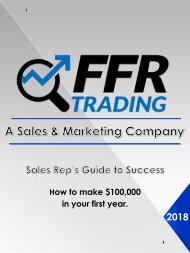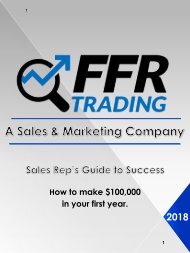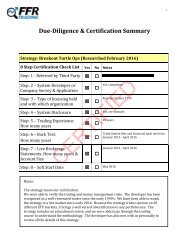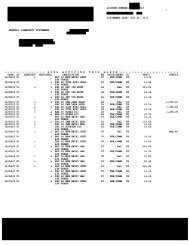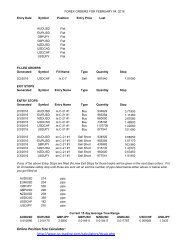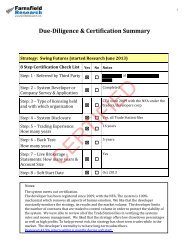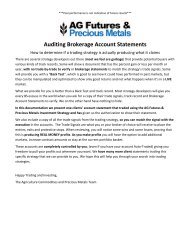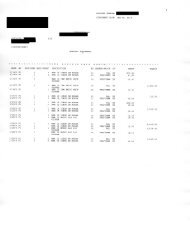The 3Dimensional Trading Breakthrough
You also want an ePaper? Increase the reach of your titles
YUMPU automatically turns print PDFs into web optimized ePapers that Google loves.
Brian Schad<br />
range below the opening price, then it’s time to “do something with my position”<br />
– offset the position, or reduce my risk.<br />
Third, if the market opens with a potential Ooops trading signal, this may be the<br />
first signal I will plan for. If the Ooops signal occurs first, followed by a volatility<br />
expansion % range move in the direction of the Ooops signal, then the second<br />
signal to occur validates the first signal. I use this as sort of a confirmation of<br />
momentum, whether it’s continued momentum or changing momentum.<br />
Last, and this is a rare one that happens only occasionally, is intra-day retracements.<br />
How many times have you experienced a market make a substantial move to the<br />
upside only to turn around and retrace the entire move? <strong>The</strong> next time the market<br />
moves up or down, with a range greater than the day before, and when you notice<br />
the market has “backed off” about half the move, calculate the range of the move<br />
by subtracting the intra-day low from the intra-day high. Next, multiply this intraday<br />
range by 70% (.7). We are now looking for a 70% retracement of this intra-day<br />
move to the downside. To find this price, simply subtract (or add) the 70% intraday<br />
value from the intra-day high (or to the low). <strong>The</strong> resulting price is where I<br />
will have to offset the position, or reduce my risk by…you guessed it, selling a call<br />
option above the market for a price equal to, or greater than, the premium that I<br />
am losing on my original put option insurance.<br />
Just today, I was involved with an Apr Lean Hog position that I had been short for<br />
the past three trading sessions. I thought today might be the day that the market<br />
would change momentum to the upside, but instead the market was down 190<br />
points from the intra-day high. When the market had backed off almost half of<br />
the move, that’s when I was alerted to be on the lookout for a 70% retracement<br />
upward. This did not happen and the momentum going into tomorrow’s trade<br />
remains down (…even though my profit target was realized). In addition, I will<br />
be looking for a potential Ooops buy signal tomorrow on the open, as the market<br />
closed near the low of the day.<br />
Remember, if any two of the possible three signals (mentioned above) occur in any<br />
given trading day, the second signal always confirms and validates the initial signal.<br />
Having the plan for tomorrow’s trade – or any plan that is designed to reduce your<br />
risk at the first opportunity of a shift in momentum – is the essence of being your<br />
own professional risk manager. Since it has been said that 10% of the traders<br />
make 90% of the money, it must be certain traders who know how to use all of<br />
the trading instruments to their full potential – and know when to execute these<br />
trades. If you know how to reduce your risk at the optimal time, the profits will<br />
follow as long as the market allows it. Once you complete this book, you will never<br />
- 101 -


